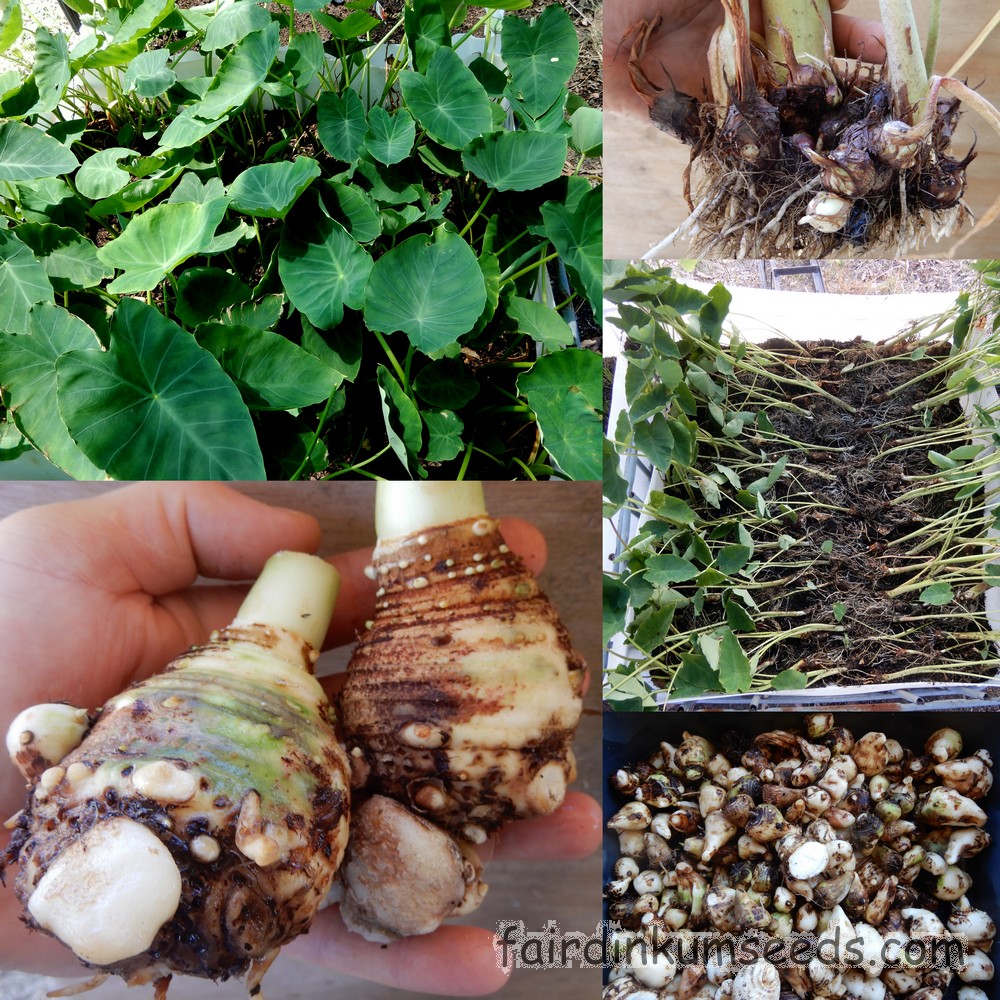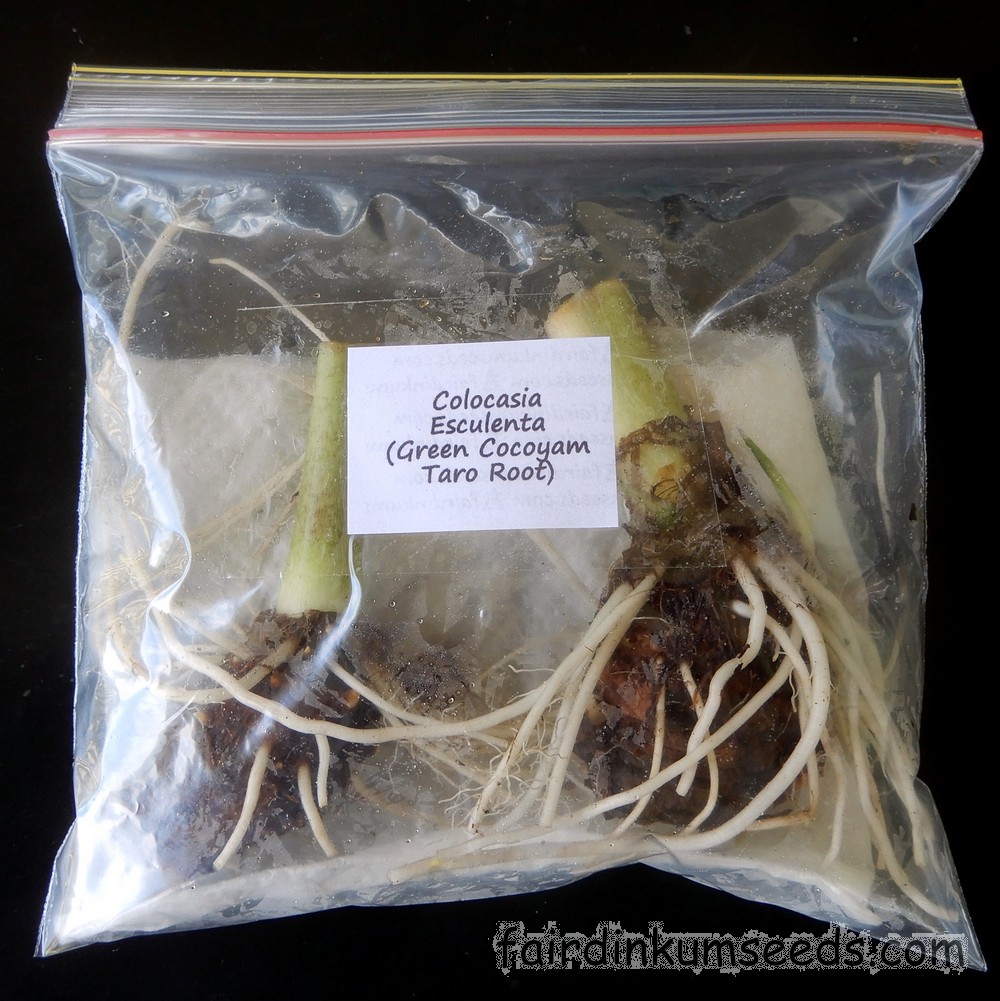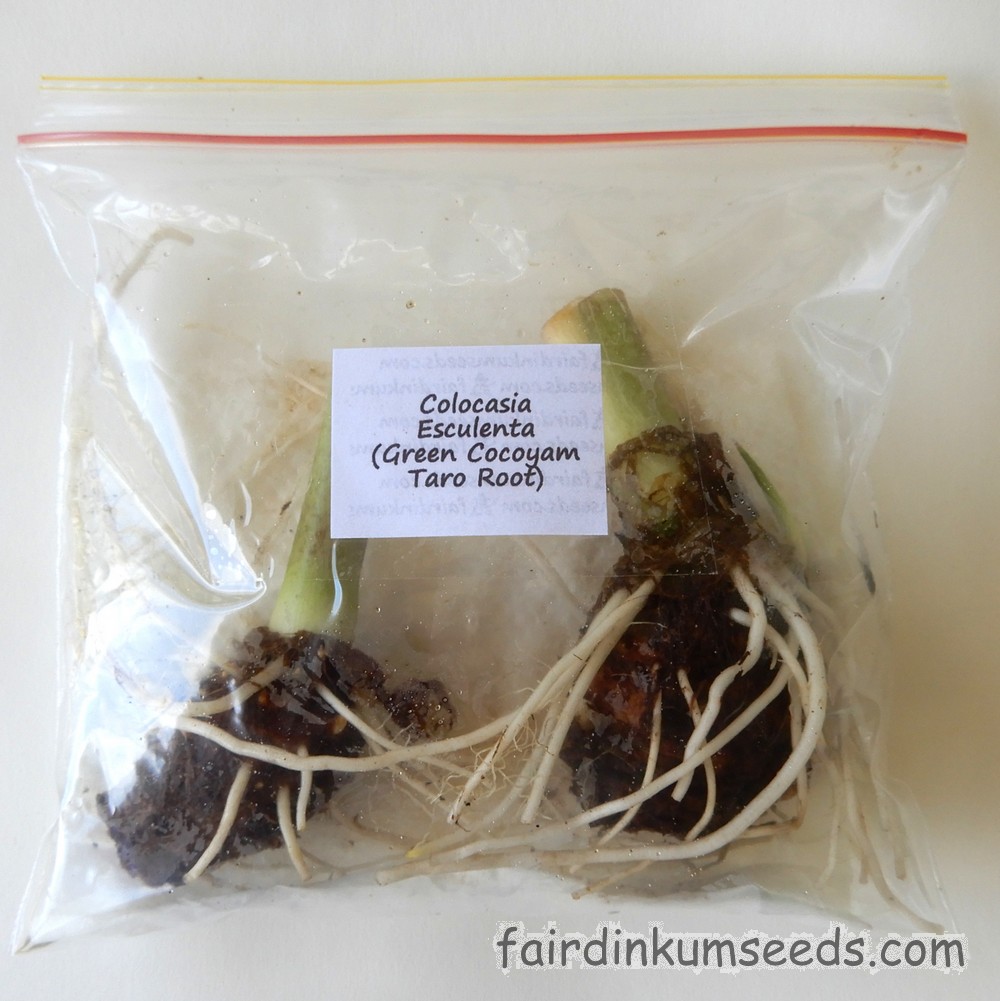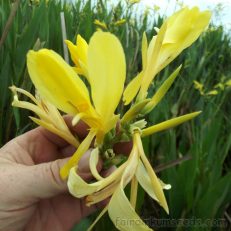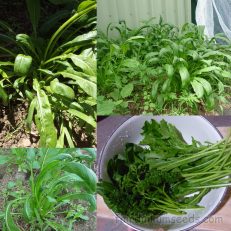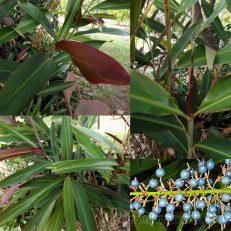Please read text!
Taro Root Colocasia Esculenta Green Cocoyam Tuber
Packet containing 2x small ready to plant tuberous roots!
Known by 100’s of names as it is valued by so many different cultural groups all around the world.
I’ll get a few of them out of the way now, but there are definitely lots more too.
Abi, Alocasia dussii, Alocasia illustris, amadumbe, amateke, arbi, aroei, Aron colocasium, Arum chinense, Arum colocasia, Arum colocasioides, Arum esculentum, Arum lividum, Arum nymphaeifolium, Arum peltatum, arvi, avi, bal, batata, batata inglesa, borshoushi, Caladium acre, Caladium colocasia, Caladium colocasioides, Caladium esculentum, Caladium glycyrrhizum, Caladium nymphaeifolium, Caladium violaceum, Calla gaby, callaloo, callaloo root, Calla virosa, cara, cheppankilangu, Chinese malanga, Chinese tayer, chino, coco, cocoyam, coco yam, colcas, Colocasia acris, Colocasia aegyptiaca, Colocasia antiquorum, Colocasia colocasia, Colocasia esculenta, Colocasia euchlora, Colocasia fonstanesii, Colocasia gracilis, Colocasia himalensis, Colocasia neocaledonica, Colocasia nymphaeifolia, Colocasia peltata, Colocasia vera, Colocasia violacea, Colocasia virosa, Colocasia vulgaris, dalo, dasheen, eddeo, eddo, eddoe, elephant’s ear, elephant ears, English potato, English yam, gaaba, gabi, inhame, itchy potato, kachu, kalo, khoai mon, khoai ngua, kochu, kochu pata, kolokas, kolokasi, kolokasimalanga, kontomire, kosu, kosu loti, Leucocasia esculenta, maan kochu, madumbi, malanga, minty-coco, mukhi, natong, ndalo, oah, ocumo, ocumo chino, pan, Polynesian potato, pomtayer, pongtaya, potato, river potato, Steudnera virosa, tales, talo, taloestaloes, taro, taya, tayer, toran, water potato, wild taro, yautia, Zantedeschia virosa etc.
This a great species as the whole plant is really nutritious and more importantly tasty, and after starting off with ~7 distinct varieties from folks all over Australia this variety is the bestest of the lot in my humble opinion.
So much so that I culled all the other varieties out and I only grow this fella now.
The root AND the leaf of this particular form are really tasty and nutritious with the only downside being a slightly smaller tuber than some.
This is off set by the vastly superior flavour and very rapid growth.
Super high in minerals and vitamins and a real low maintenance plant that thrives in moist clay soils and boggy areas.
I don’t have any of that at my place so I just use large 1/2 cut IBC tanks of my local sandy soil and I have the drainage hole about 2cm below the soil line.
This allows water to pool in the bottom like a pond, but still allows the surface soil to drain, preventing the roots from rotting if we get a heap of unexpected flooding type rain(I wish…).
The tub holds the water but still allows the top couple centimeters of soil to overflow and drain in an emergency.
I also grow it on rafts in the dam and in the gravel of my aquaponics, but the large tubs or no frills wicking beds works best for me here.
The other big advantages are that being contained there are no weed issues, the harvest is super easy, and the crop can’t escape either.
While this variety is very different to both our native and the much more common weedy varieties, being the same species it is possible for it to become a weed issue if it got into your local creeks and scrub.
Three very important points!!!
1. Wear gloves when harvesting, chopping, preparing a lot of it.
If you are harvesting heaps of it can cause irritation and burning to the tender skin around your finger nails and the webbing and I can not even imagine getting it anywhere more “sensitive”.
2. NEVER eat it raw or under cooked. Don’t even lick it!!!
It contains little calcium oxalate crystals that need to be broken down by heat before it is edible, and if you have ever had a tiny bite raw, trust me, you will never do that again!
Ffwwoah, feels like a mouthful of crushed lightbulbs and borax and it truly is a terrifying experience!
Vinegar gargling and self-induced vomiting helps, a little….
By my super unscientific guestimate this variety contains way less than the other types I have grown over the years, and much much much less than the wild weedy types.
3. Before you email me asking about a feral type you found, I do NOT recommend consumption of any found in the wild as it just isn’t worth the risk in my opinion. If you are super hungry and find something similar in the bush that’s awesome news as there are always heaps of much safer bushfoods and edible weeds nearby. Skip these guys and keep looking.
All that said, this particular variety is both safe and delicious when cooked, just like Yam x Potato.
It is also the main ingredient of a whole heap of dishes.
Just steam or boil the root for 40mins+ and it is bloody awesome!
The leaf is great too, but I personally reckon it is best dried first before cooking.
Some folks do eat it cooked fresh, but drying then cooking breaks down the oxalic acid crystals much better and improves the flavour heaps at the same time.
It’s like a richer better, almost meatier tasting spinach.
I generally dry the leaves and chuck them in a pressure cooker curry, soup or stew when I’m too lazy/tired to go outside.
The cooked dried leaf tastes great and stores for a year or more without any dramas still keeping the vast majority of it’s nutrition.
All I do is harvest the leaves, remove the stems so they dry evenly, thread the large flat leaves on a string and hang them on the clothes line outside.
Once fully dried, and on a super dry sunny day I then roll them up and tie in bundles of 4-6leaves and shove them in a bag.
One bundle(+meat/fish/spices/root vegetables) is the perfect size for a 4serve pot of curry/soup/stew etc.
Super convenient and a great SHTF food storage option that I hardly ever see mentioned in the prepping or self-sufficiency forums?
It has been cultivated as a food crop for more than 28,000+ years and is a major staple in China, India, South East Asia, Indonesia, Polynesia, the Mediterranean, Africa, and South America.
The cooked leaves are used in Hawaiian luaus and the corms are mashed into poi.
New Zealand Maori style Hangi/Hungi cooked taro is awesome!
I could just sit down in the shade and eat it with a cold beer for days.
That’s about it folks, keep it warm and moist and you can’t really go wrong.
Grown by me and the Mrs organically, no chems no nasties, no problems!!!
